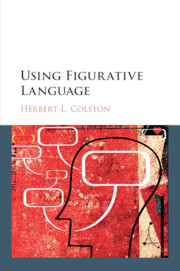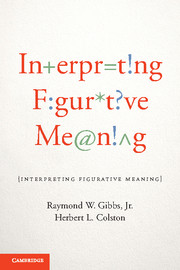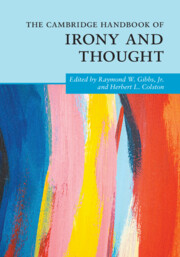Using Figurative Language
£30.99
- Author: Herbert L. Colston, University of Alberta
- Date Published: May 2019
- availability: Available
- format: Paperback
- isbn: 9781107513488
£
30.99
Paperback
Other available formats:
Hardback, eBook
Looking for an inspection copy?
This title is not currently available on inspection
-
Using Figurative Language presents results from a multidisciplinary decades-long study of figurative language that addresses the question, 'Why don't people just say what they mean?' This research empirically investigates goals speakers or writers have when speaking (writing) figuratively, and concomitantly, meaning effects wrought by figurative language usage. These 'pragmatic effects' arise from many kinds of figurative language including metaphors (e.g. 'This computer is a dinosaur'), verbal irony (e.g. 'Nice place you got here'), idioms (e.g. 'Bite the bullet'), proverbs (e.g. 'Don't put all your eggs in one basket') and others. Reviewed studies explore mechanisms - linguistic, psychological, social and others - underlying pragmatic effects, some traced to basic processes embedded in human sensory, perceptual, embodied, cognitive, social and schematic functioning. The book should interest readers, researchers and scholars in fields beyond psychology, linguistics and philosophy that share interests in figurative language - including language studies, communication, literary criticism, neuroscience, semiotics, rhetoric and anthropology.
Read more- Proposes a much more broad view of figurative language cognition that will appeal to and inspire multiple interdisciplinary constituencies that study figurative language
- Readers will be able to understand discussed phenomena through access to vivid examples culled from authentic language data and widely available cultural sources
- By demonstrating the deceptively complex interplay of mixed mechanisms in seemingly simple 'everyday' figurative utterances, the book will leave readers with an appreciation of the depth and complexity of figurative language
Reviews & endorsements
'The major goal of this book is to provide answers to the fundamental question, 'Why does figurative language even exist?'. Colston efficiently achieves this goal. This book, a monograph which summarizes his earlier publications on figurative language since the 1990s, has several strong points. … this book is a valuable contribution to figurative language research. It contributes insights in both theoretical and practical aspects of figurative language use and comprehension …' Weiwei Zhang, Linguist List (www.Linguistlist.org)
See more reviews'An honourable credo towards the study of figurative language.' Günter Schmale, Lexis
Customer reviews
Not yet reviewed
Be the first to review
Review was not posted due to profanity
×Product details
- Date Published: May 2019
- format: Paperback
- isbn: 9781107513488
- length: 282 pages
- dimensions: 155 x 230 x 15 mm
- weight: 0.4kg
- availability: Available
Table of Contents
1. Introduction: why don't people say what they mean?
2. What is a pragmatic effect?
3. What are the pragmatic effects?
4. How is figurative language used?
5. What is figurative language use?
6. Conclusion: meaning happens.
Sorry, this resource is locked
Please register or sign in to request access. If you are having problems accessing these resources please email [email protected]
Register Sign in» Proceed
You are now leaving the Cambridge University Press website. Your eBook purchase and download will be completed by our partner www.ebooks.com. Please see the permission section of the www.ebooks.com catalogue page for details of the print & copy limits on our eBooks.
Continue ×Are you sure you want to delete your account?
This cannot be undone.
Thank you for your feedback which will help us improve our service.
If you requested a response, we will make sure to get back to you shortly.
×






